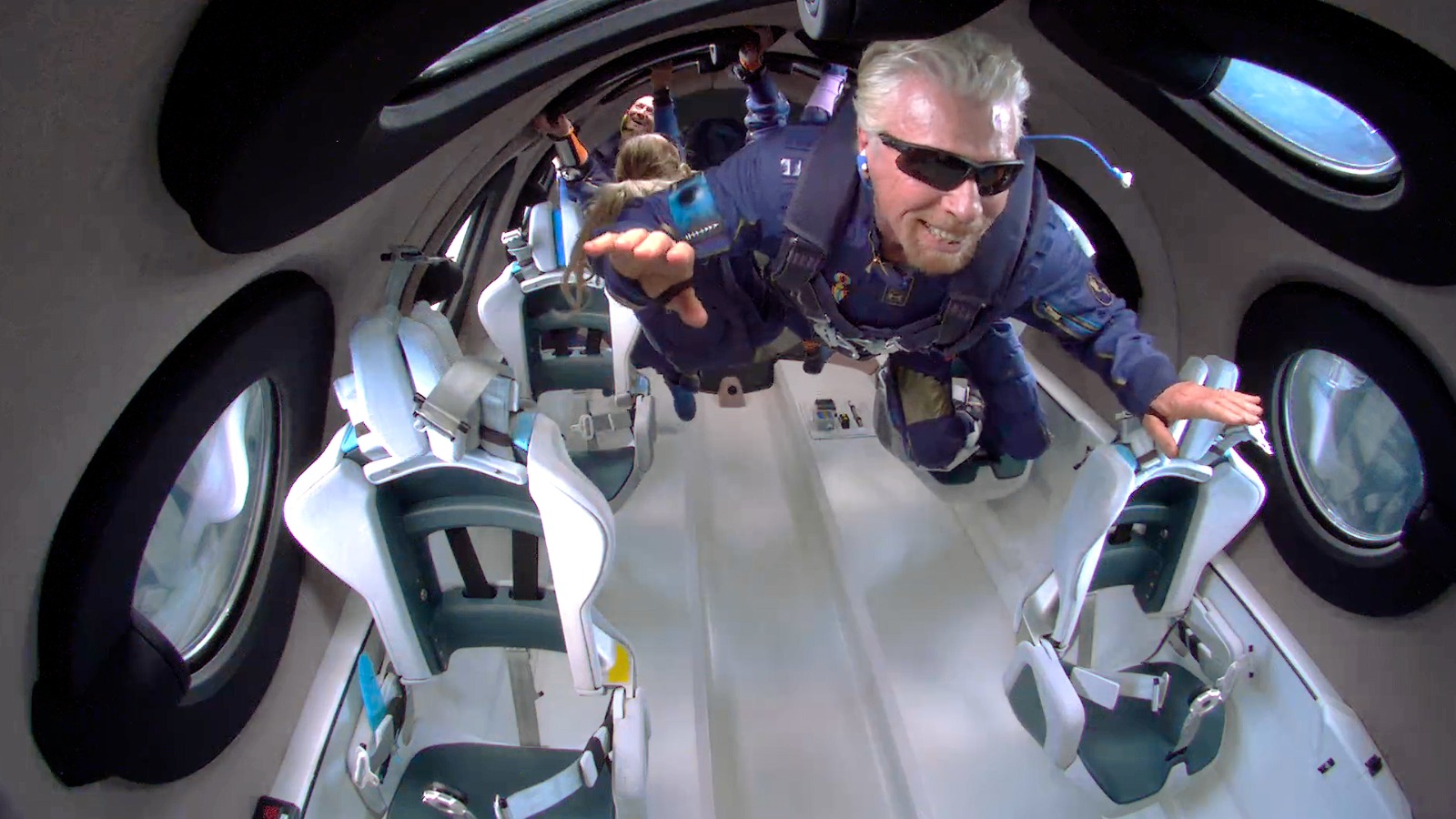Virgin Galactic is selling tickets to space again, now for $450,000 per seat

Virgin Galactic has started selling seats on its suborbital spaceliner again — but the price has gone up.
The company, part of Richard Branson's Virgin Group, halted ticket sales in December 2018, shortly after its VSS Unity vehicle reached suborbital space for the first time on a piloted test flight. Back then, the price was $250,000 per seat.
On Thursday (Aug. 5), Virgin Galactic announced that it's reopening ticket sales, effectively immediately, with a starting price of $450,000 per seat.
In photos: Virgin Galactic's 1st fully crewed spaceflight with Richard Branson
The move comes in the wake of Unity's fourth spaceflight, which occurred July 11 from Spaceport America in New Mexico. That test mission was Unity's first fully crewed trip to the final frontier; the space plane carried Branson and three other people in its cabin, as well as two pilots in the cockpit.
"As we endeavor to bring the wonder of space to a broad global population, we are delighted to open the door to an entirely new industry and consumer experience," Virgin Galactic CEO Michael Colglazier said in a statement Thursday that also announced the company's financial results for the second quarter of 2021.
Virgin Galactic is offering customers three options: purchase a single seat, buy several together or book an entire flight on the eight-passenger Unity (or other space planes that come into operation, such as the recently built VSS Imagine). The company also sells seats for microgravity research and professional astronaut training. Those are in a different tier, going for $600,000 apiece, Colglazier said during a call with investors on Thursday afternoon.
Breaking space news, the latest updates on rocket launches, skywatching events and more!
VSS Unity lifts off under the wing of a carrier plane called VMS Eve, which hauls the space plane to an altitude of about 50,000 feet (15,000 meters). At that point, the spaceliner drops free, ignites its onboard rocket motor and blasts itself to suborbital space.
Passengers experience three to four minutes of weightlessness and get to see Earth against the blackness of space before coming back down to Earth for a runway landing, about an hour after takeoff.
About 600 people have booked a ride to date, Virgin Galactic representatives said. But they expect that number to rise considerably now, given the intense interest in the July 11 flight.
That mission "was an inflection point for our global brand," Colglazier said during Thursday's call. "We created a cultural moment. We saw incredible global engagement, with viewership coming from over 65 countries. Millions of space enthusiasts around the planet shared a glimpse into the journey the Virgin Galactic future astronauts can expect, and they loved it."
Colglazier also shared some timeline updates during the call. Unity's next flight, a revenue-generating mission that will carry members of the Italian Air Force, is now expected to launch in late September, he said.
After that flight is complete, VMS Eve will fly to the Mojave, California, headquarters of The Spaceship Company, Virgin Galactic's manufacturing subsidiary. There, Eve will receive a series of "enhancements," which include the strengthening of various structural components.
This work is designed to allow Eve to fly 100 times between major inspections as opposed to the current 10 — a huge jump that will boost Virgin Galactic's flight rate significantly down the road, Colglazier said. (The company eventually plans to fly extremely frequently, with fleets of space planes and carrier planes stationed at spaceports around the world.)
Eve is expected back at Spaceport America around the middle of next year. Virgin Galactic will fly one more fully crewed test flight shortly thereafter, then shift to full commercial operations in the third quarter of 2022, if all goes according to plan.
Virgin Galactic has one chief competitor in the suborbital space tourism industry — Jeff Bezos' Blue Origin, which flew its first crewed spaceflight on July 20. (Bezos himself was on that flight.) Blue Origin has not yet announced how much a seat will coast aboard its New Shepard vehicle, a reusable rocket-capsule combo.
Mike Wall is the author of "Out There" (Grand Central Publishing, 2018; illustrated by Karl Tate), a book about the search for alien life. Follow him on Twitter @michaeldwall. Follow us on Twitter @Spacedotcom or Facebook.

Michael Wall is a Senior Space Writer with Space.com and joined the team in 2010. He primarily covers exoplanets, spaceflight and military space, but has been known to dabble in the space art beat. His book about the search for alien life, "Out There," was published on Nov. 13, 2018. Before becoming a science writer, Michael worked as a herpetologist and wildlife biologist. He has a Ph.D. in evolutionary biology from the University of Sydney, Australia, a bachelor's degree from the University of Arizona, and a graduate certificate in science writing from the University of California, Santa Cruz. To find out what his latest project is, you can follow Michael on Twitter.
